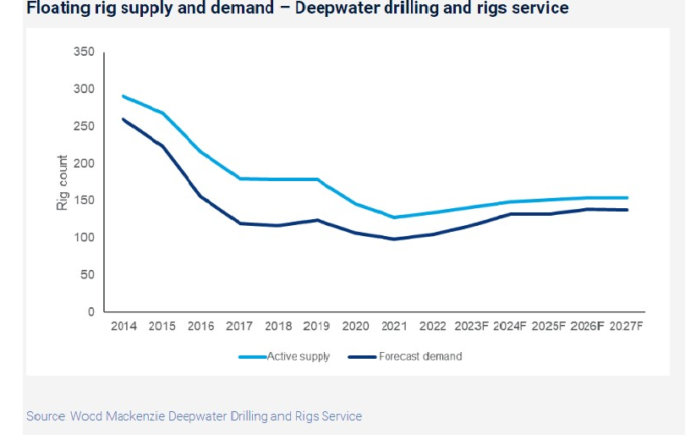- Rig demand to increase 20% from 2024-2025, rates up 40% past year
Rig utilization has returned to pre-COVID levels, driving rates up 40 percent in the past year as demand is forecast to increase another 20 percent from 2024-2025, according to Wood Mackenzie’s latest report.
According to the report, “Are we at the tipping point of the deepwater rig market – active floater utilization has rebounded from a low of 65% in 2018 to over 85% in 2023, the number of contracted ultra-deepwater (UDW) benign rigs has returned to pre-COVID levels and day rates for best-in-class floaters have doubled in the past two years?”
“Higher oil prices, the focus on energy security and deepwater’s emissions advantages have supported deepwater development and, to some extent, boosted exploration”, says Leslie Cook, principal analyst for Woods. “Active supply is now more in line with demand and rig cash flows are positive. We expect demand to continue to rise.”
The report further revealed that much of this expected growth would come from the “Golden Triangle” of Latin America, North America and Africa, as well as parts of the Mediterranean. Woods therefore projects that these areas will account for 75% of global floating rig demand through 2027.
Report also showed that recent activity had pushed rates up 40% in the past year hence the anticipation of a further 18% escalation for floater day rates that before the end of the year, rates of US$500,000/day or above may return for highly-prized, advantaged ultra-deepwater rigs, with benign ultra-deepwater rigs to average US$420,000/day, with the first half of 2023 utilization at 90%/.
“With increasing demand and rates, we are approaching the tipping point for new builds and reactivations,” says Cook. “We haven’t reached it yet, but for new builds, it’s not a question of if, but when. The need for decarbonisation, technological advancement, more efficiency and, ultimately, fleet replacement will drive a new cycle. If rig economics remain robust and rig companies see contractual risks abate, this could be sooner rather than later.”


